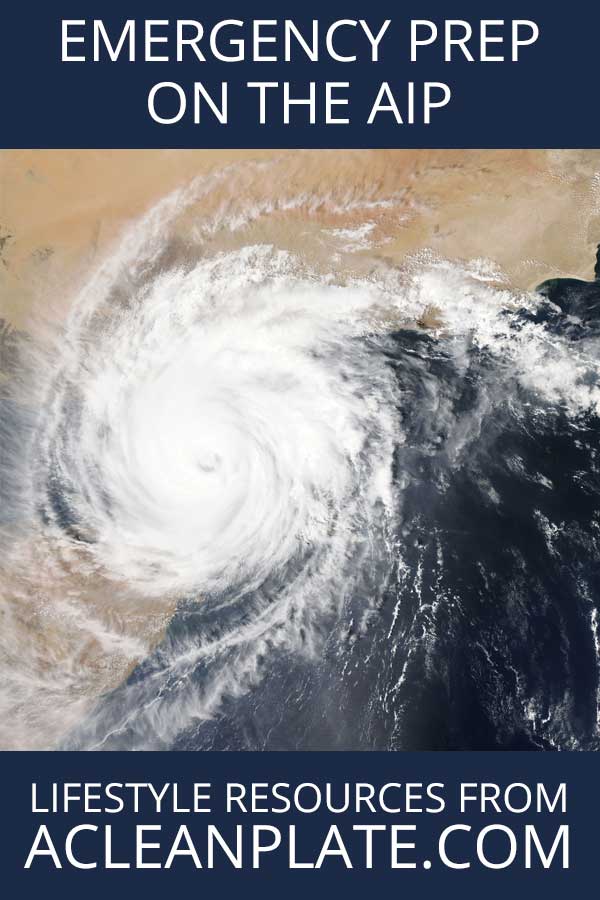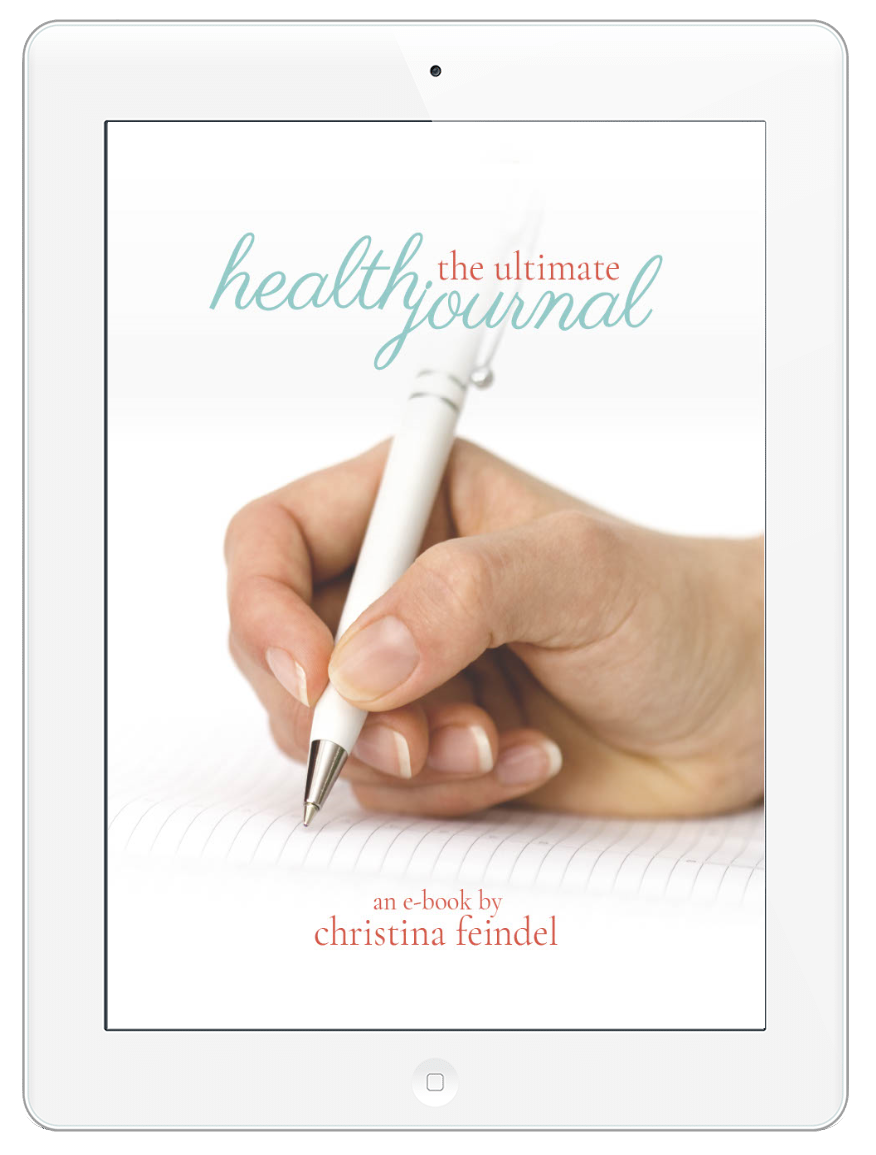Preparing for an Emergency on the Autoimmune Protocol

With record-breaking hurricanes and wildfires threatening much of the United States and our neighbors in the Caribbean, it’s only natural to wonder how you can protect your health during a natural disaster or other emergency situation where you might be without power, fresh water, or access to grocery stores. If you live in a disaster-prone area, you probably already know “the drill”–stock up on ice, fill the bathtubs with water, get gas, have extra batteries. But what about facing down an emergency on the autoimmune protocol?
I found out we might be affected by Harvey two days before it made landfall. By the time I got to the store to prepare for the possibility of being stuck in our home without power for a few days, the shelves were already near empty and it was a struggle to find anything non-perishable I could eat without making compromises. It was very clear that I would need to plan ahead in case of another emergency, so I’ve put together some AIP-friendly best practices to help you do the same!
How to Prep for an Emergency on the Autoimmune Protocol
1. Batch cook ahead of time
If you lose power, you won’t be able to prepare meals, but that doesn’t mean you can’t eat normally! Batch cook meals (one-pot meals and soups are great for this) ahead of time and store them in your freezer. Get lots of ice and have a large cooler on hand to store your food in if you lose power and your fridge is no longer cold enough for storage. If you have a washing machine, you can fill that with ice and use it as a cooler, too (it won’t be as well-insulated as a cooler, so it’s better for short-term storage or beverages). Store your food in airtight containers like mason jars with plastic lids so melted ice doesn’t seep in and ruin your food. And eat all of it before you break into your non-perishable items! That way, nothing goes to waste.
2. Stock up on counter-friendly produce
Produce like apples, pears, oranges, bananas, kiwi, unripe peaches, carrots, cucumbers, and melons keep well outside the refrigerator. Grab plenty of these for safe, healthy snacks and sides when you lose power (eat bananas and ripe peaches and pears first, since they won’t last as long). If you manage to keep power or have a backup cooking method like a generator or camp stove, you can stock up on sweet potatoes, turnips, and winter squash, too. Some of the recipes in my e-book 28 Days of No-Cook AIP could be helpful here!
3. Stock up on canned and dried goods
Canned sardines, oysters, and salmon packaged in water or olive oil make for great proteins. Dried fruit, plantain chips, and toasted coconut make good snacks. Coconut oil is a nice supplement to any meal to help fight cravings and help you feel satiated. And for your all-important veggies? Beets are one of my favorites because they’re so darn healthy even when they’re canned! Some other AIP-friendly veggies I’ve found are olives, spinach, and asparagus. Buy plenty so you don’t have to worry about running out!
4. Stock up on water
Plan for at least 1 gallon per person per day you expect to be without safe, running tap water. For two people for seven days, that’s fourteen gallons. Before the storm, after you’ve done your washing, fill your bathtubs and other basins with water you can use to flush the toilet or run through a water filter for drinking if you need to.
5. Don’t let fear keep you from eating
It isn’t always possible to find 100% AIP-friendly food when your mobility is limited, supplies are short, or you’ve only got hours before the disaster hits. Stock up on the safest foods you can find, but be willing to make some compromises. Canned fruits and vegetables often contain citric acid, sugar, or white vinegar. Canned meats and seafood often have soy or seasonings like black pepper. It is more important to eat during your emergency than to adhere to your elimination diet. Don’t deprive yourself! Eat to keep your strength up and try to get plenty of rest to make up for it.
Keep Your Health on Track
 Whether you’re starting the autoimmune protocol, a new medication, an exercise routine or trying to get to the bottom of your headaches or indigestion, cataloging your activities and symptoms is a great way to gauge your progress. The Ultimate Health Journal can help you stay on track with diet, fitness, and other lifestyle changes you have begun or been prescribed, notice patterns in your health and lifestyle so you can enact positive changes, and provide a valuable tool for you, your family, and your healthcare team. I would never have noticed that cinnamon makes me sneeze or dairy gives me hiccups without keeping a written record during my elimination diet, which helped me see the patterns that solved my problems! The ebook is available as a digital download with printable template for $9.99.
Whether you’re starting the autoimmune protocol, a new medication, an exercise routine or trying to get to the bottom of your headaches or indigestion, cataloging your activities and symptoms is a great way to gauge your progress. The Ultimate Health Journal can help you stay on track with diet, fitness, and other lifestyle changes you have begun or been prescribed, notice patterns in your health and lifestyle so you can enact positive changes, and provide a valuable tool for you, your family, and your healthcare team. I would never have noticed that cinnamon makes me sneeze or dairy gives me hiccups without keeping a written record during my elimination diet, which helped me see the patterns that solved my problems! The ebook is available as a digital download with printable template for $9.99.
